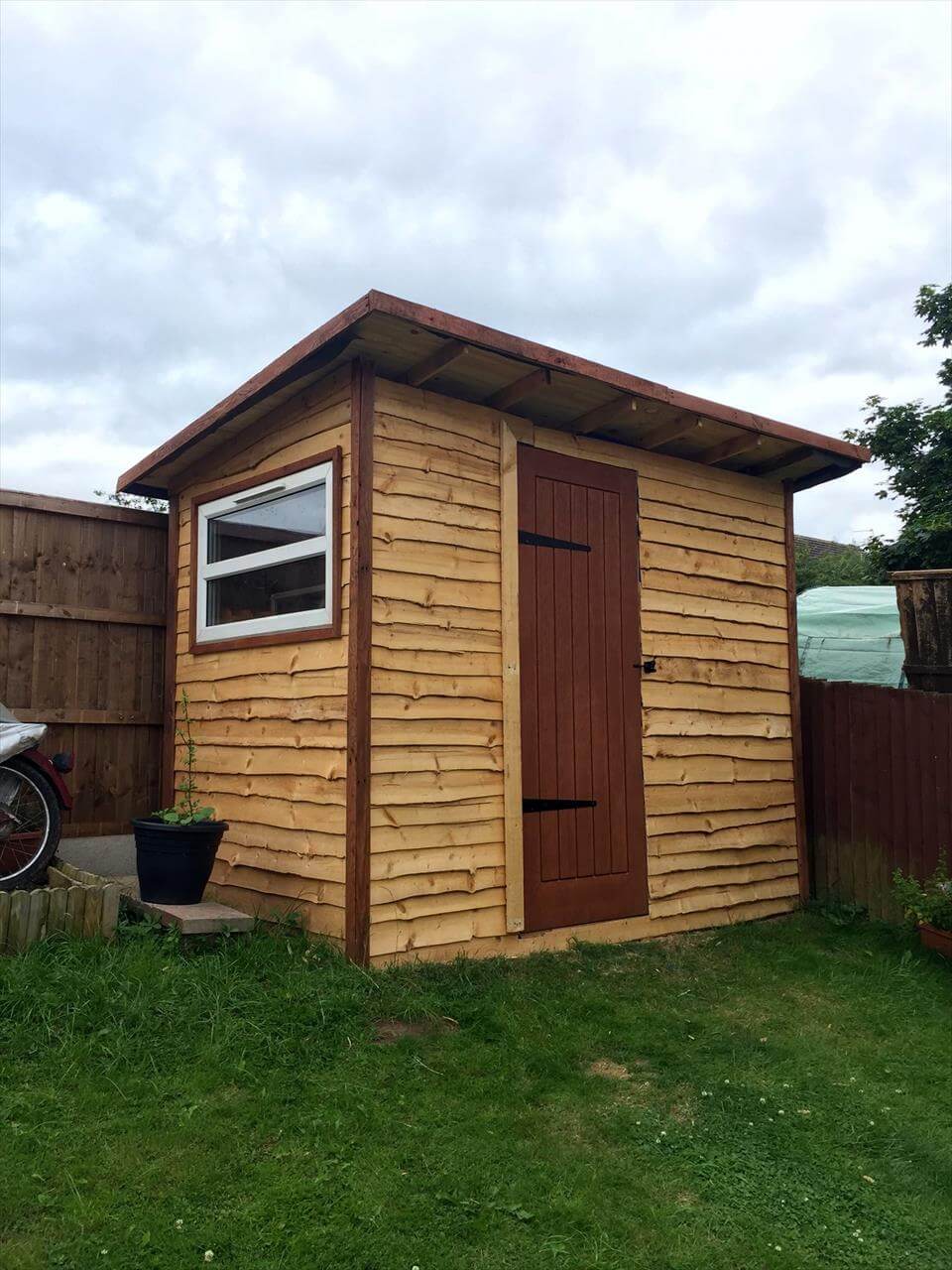
Constructing a Durable Wooden Pallet Shed: A Comprehensive DIY Guide
This comprehensive guide provides detailed instructions for building a sturdy and functional shed utilizing reclaimed wooden pallets. While seemingly a simple project, careful planning and execution are crucial for ensuring longevity and structural integrity. This guide outlines the process from initial design and material acquisition to the final finishing touches.
Phase 1: Planning and Preparation
Before embarking on construction, meticulous planning is essential. This phase involves determining the shed's dimensions, location, and necessary materials.
1.1 Determining Dimensions and Location
The shed's dimensions should be dictated by your storage needs and available space. Consider the items you intend to store to determine the required internal volume. Accurate measurements are vital for material calculations and structural stability. The chosen location must be level, adequately drained to prevent waterlogging, and compliant with any local building regulations. Access for delivery and construction should also be considered.
1.2 Material Acquisition and Assessment
Pallet Selection: Sourcing high-quality pallets is paramount. Inspect each pallet for rot, insect infestation, and structural damage. Prioritize pallets constructed from pressure-treated lumber for enhanced durability, especially if exposed to the elements. Determine the number of pallets required based on the shed's planned dimensions and wall configuration. Note: Some pallets may contain hazardous materials; ensure they are suitable for your intended purpose.
Additional Materials: Besides pallets, you'll need:
- Concrete blocks or a suitable foundation base.
- Pressure-treated lumber for the base frame and roof supports.
- Roofing material (e.g., corrugated metal sheets, asphalt shingles).
- Fasteners: galvanized screws, nails, and bolts.
- Wood preservative and sealant.
- Level, measuring tape, saw (circular saw or hand saw), hammer, drill, screwdriver.
- Safety equipment: safety glasses, work gloves, hearing protection.
Phase 2: Foundation and Base Construction
A stable foundation is crucial for preventing settling and ensuring the shed's longevity. This section details the construction of a robust base using concrete blocks.
2.1 Foundation Preparation
Clear the chosen location of debris and vegetation. Level the ground using a shovel and rake. Mark out the dimensions of the shed's base using string and stakes. Ensure the area is square and level using a spirit level.
2.2 Laying the Concrete Blocks
Arrange concrete blocks to form the perimeter of the shed's base, following the marked dimensions. Ensure the blocks are level and aligned. You may need to add gravel or compacted soil to achieve a level base. Consider adding a layer of landscape fabric beneath the blocks to prevent weed growth.
2.3 Constructing the Base Frame
Build a rectangular frame using pressure-treated lumber, matching the dimensions of the concrete block base. Secure the frame to the concrete blocks using appropriate fasteners. This frame will provide a stable and level surface for the pallet walls.
Phase 3: Wall Construction and Assembly
This phase involves assembling the pallet walls and attaching them to the base frame. Careful planning and execution are key to achieving a structurally sound and visually appealing shed.
3.1 Pallet Preparation
Clean the pallets thoroughly to remove debris and loose wood. Repair any damaged sections using wood filler and sandpaper. Consider applying a wood preservative to enhance the pallets' longevity and protect against rot and insects.
3.2 Wall Assembly
Assemble the pallet walls by standing the pallets vertically and securing them together using screws or nails. Ensure the pallets are aligned and tightly fitted to create a strong and stable wall. For added strength, consider using additional bracing between the pallets.
3.3 Attaching Walls to the Base Frame
Carefully lift and position the assembled pallet walls onto the base frame. Secure the walls to the frame using appropriate fasteners. Ensure the walls are plumb and aligned. Consider using additional bracing between the walls and the base frame to enhance structural stability.
Phase 4: Roof Construction
The roof design must provide adequate protection from the elements. A simple gable roof is recommended for its relative ease of construction and effective water runoff.
4.1 Roof Frame Construction
Construct a gable roof frame using pressure-treated lumber. The frame should extend beyond the shed's walls to create an overhang, protecting the walls from rain and snow. The rafters should be appropriately spaced and secured to the top of the pallet walls.
4.2 Roofing Material Installation
Install the chosen roofing material (e.g., corrugated metal sheets, asphalt shingles) according to the manufacturer's instructions. Ensure the roofing material is securely fastened and overlaps to prevent leaks. Consider adding flashing around chimneys or other penetrations to prevent water ingress.
Phase 5: Finishing Touches and Safety Considerations
The final phase involves adding finishing touches and ensuring the shed's safety and security.
5.1 Door and Window Installation (Optional)
If desired, incorporate a door and windows. This requires careful planning and measurement to ensure proper fit and functionality. Consider using pre-made doors and windows for simplicity. If constructing your own, ensure they are adequately reinforced for security.
5.2 Sealing and Finishing
Apply a wood sealant or paint to protect the pallets from the elements and enhance their appearance. This step is crucial for extending the shed's lifespan.
5.3 Safety Considerations
Always wear appropriate safety equipment (safety glasses, gloves, hearing protection) during construction. Ensure the shed is constructed on a level and stable foundation. Consider adding additional bracing and supports to enhance structural integrity. Secure any sharp edges or potentially hazardous elements.
By following these detailed steps, you can successfully construct a durable and functional wooden pallet shed. Remember that careful planning, precise measurements, and the use of quality materials are critical for achieving a strong and long-lasting structure. Regular maintenance, including inspection and repairs, will further enhance its longevity.
Sign up here with your email
ConversionConversion EmoticonEmoticon